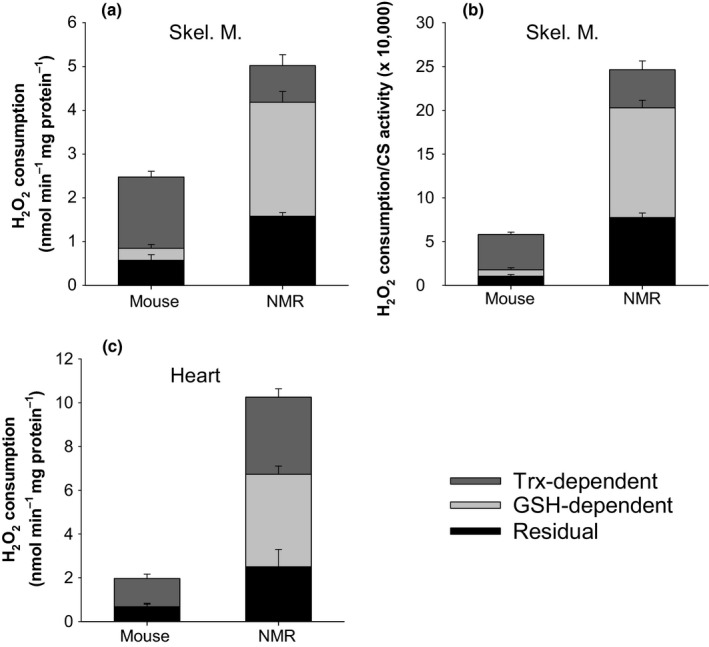Figure 5.

Cumulative allocation of H2O2 consumption among the three major matrix consumers of H2O2 for skeletal muscle (a and b) and heart (c) mitochondria. Total consumption corresponds to the maximal consumption obtained during malate oxidation (from Figure 4, see text for rationale). The Trx‐dependent proportion was defined by subtracting consumption with malate + auranofin from total consumption (See Figure 1). Residual consumption is the consumption in absence of exogenously added substrate. The GSH‐dependent proportion was defined as the proportion of total consumption not explained by the sum of the Trx‐dependent pathway and residual consumption, on the premise that only the three consumers of H2O2 considered here are important in the matrix. Residual consumption can be explained by the activity of catalase as well as by residual activity of the respiration‐dependent pathways for the consumption of H2O2, which are partially energized by endogenous (slow oxidizing) substrates remaining in the matrix after mitochondrial isolation (see Munro et al., 2016). Catalase was previously found to represent a negligible component of the residual consumption for rat skeletal muscle mitochondria (Munro et al., 2016), but the higher levels of residual consumption found here for the NMR in both tissues suggests at least some involvement of catalase
